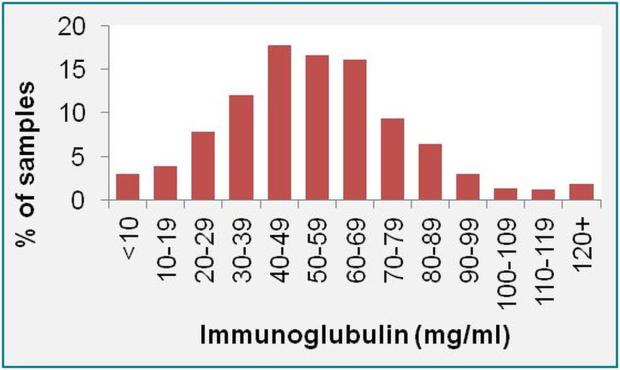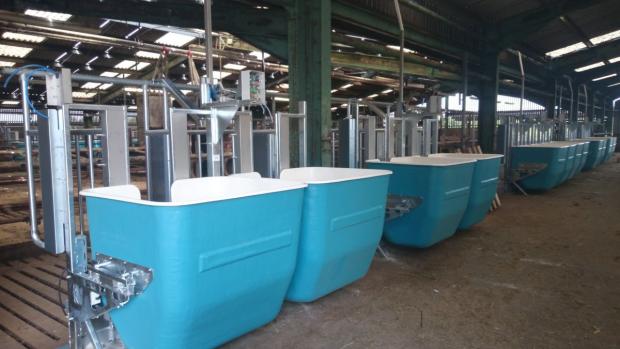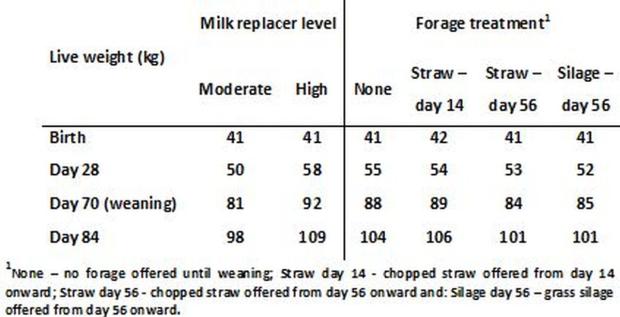Heifer Rearing - A Hidden Cost on Many Dairy Farms
Date published:
With the dairy industry currently under severe financial pressure, focus on cost of production is more important than ever. CAFRE benchmarking data indicates the average cost of rearing a heifer to the point of calving is between 5 to 6 ppl on all milk produced. How do we control rearing costs but still achieve the growth and development targets required to ensure that heifers are in-calf by 15 months and enter the dairy herd at 24 months of age at the ideal weight?

Minimising calf losses and ill health
Mortality rates within the first weeks of life are typically 4-7%. However, significant variation exists between farms, highlighting that management, hygiene, husbandry and biosecurity all have important roles to play. Colostrum management is the cornerstone in successfully preparing the calf for a good start in life.
Colostrum contains a range of components that are important for the health and nutrition of the new born calf. These include sugars, fats, proteins, vitamins, minerals, immunoglobulins and growth factors. Immunoglobulins play a crucial role in the immune system, fighting off pathogenic organisms and providing resistance to disease.
The achievement of a high passive immune status in the new born calf is through a combination of:
Colostrum quality (Quality)
Quantity of colostrum consumed (Quantity)
Timeliness of feeding (Quickness)

Studies at AFBI and internationally have shown the benefits of offering up to 10% of birth weight as a first feed of colostrum (limited to maximum of 4 litres) on calf immune status and also the importance of delivering this first feed within the first hours of life. AFBI research has shown that feeding lower levels of colostrum, for example 5% of birth weight (approx. 2 litres) fed within minutes of birth, resulted in 13% of calves failing to achieve an adequate immune status (10mg/ml IgG). In this study, only 27% of calves fed 5% of birth weight (2 litres of colostrum) had serum IgG levels greater than 15 mg/mL at 24 h of age compared to 81% of calves fed 10% of birth weight (approx. 4 litres) as colostrum.

Work is currently ongoing with over 1,000 heifers on NI dairy farms to quantify the impacts of colostrum management, immune status, calf ill health and calf nutrition on long term performance and the economics of production. This information will help inform the development of best practice guidelines and reinforce the need for care and attention in the first days of the calf’s life to maximise its production potential.
Controlling feed costs
CAFRE benchmarking data indicate that milk, forage and concentrate feed costs account for almost 85% of the total variable costs incurred in rearing a dairy heifer (typically £571 per heifer). At the pre weaning stage, research is ongoing to optimise milk/milk replacer feeding level and weaning protocols to maximise lifetime performance. Early AFBI research found no long term benefits of increasing milk replacer feeding level beyond 600 g per day, however research conducted in the US has shown benefits under very high output milk production systems. What is clear is underfeeding of milk or milk replacer can have negative consequences. Work currently underway at AFBI is examining weaning protocols, in combination with timing of forage provision, under different milk replacer feeding levels.

Once the calf has developed into a ruminant, grazed grass is the cheapest feed source available within Northern Ireland production systems. A DAERA and AgriSearch funded project has recently been initiated which will evaluate a range of grazing systems with respect to both animal and sward performance (Figure 2). Currently, 90 heifer calves have been assigned to either 3 or 6-day rotation paddocks or a continuous grazing area of equal total area. Daily live weight gain to date, with no concentrate being offered, has averaged 0.7 kg per day irrespective of grazing system. However, almost 20% of the total area allocated to rotational paddocks has been harvested as silage, whereas no silage has been made from the continuously grazed area. This grazing study will complement indoor nutrition studies utilising recent investments (Figure 3) at AFBI in automated equipment to record feed intake. This information will enable us to to better understand the nutritional needs of the growing heifer, thereby informing the development of best practice rearing systems.
Summary
Heifer rearing is a significant cost within dairy production. Previous AFBI research has developed clear target weights to achieve at critical points during the rearing period in order to ensure that heifers calve down at the optimum 23-24 months of age at 540-580 kg. Ongoing research is investigating how critical issues such as colostrum, nutrition and grazing management impact on the ability to achieve these targets, whilst enabling heifer replacements to achieve their full genetic potential.
Notes to editors:
AFBI carries out high quality technology research and development, statutory, analytical, and diagnostic testing functions for DAERA and other Government departments, public bodies and commercial companies.AFBI's Vision is “Scientific excellence in Northern Ireland … serving the world”.All media enquiries to AFBI Press Office